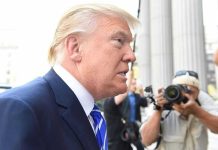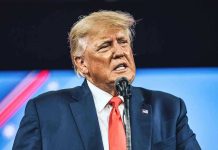
Cracker Barrel’s abrupt logo reversal showcases the power of public backlash against changes to beloved American traditions.
Story Highlights
- Cracker Barrel faced intense backlash after changing its logo, removing “Uncle Herschel.”
- The company quickly reverted to the classic “Old Timer” logo within a week.
- Former President Trump publicly urged the company to embrace its traditional imagery.
- The event underscores the tension between modernization and heritage in branding.
Public Backlash and Political Influence
In mid-August 2025, Cracker Barrel unveiled a new, simplified text-only logo, omitting the iconic “Uncle Herschel” illustration. This change sparked significant backlash from customers and political figures. Many accused the company of abandoning its heritage, a sentiment echoed by former President Donald Trump, who urged Cracker Barrel to revert to its traditional branding. The swift and vocal public reaction highlights the cultural sensitivity surrounding changes to nostalgic brand elements.
Corporate Response and Reversal
Facing mounting pressure, Cracker Barrel announced on August 26, 2025, that it would restore the classic “Old Timer” logo. The decision was made after extensive feedback from loyal customers who expressed their love for the original design. Cracker Barrel’s swift response demonstrates the company’s acknowledgment of its customer base’s attachment to traditional values and imagery. This move was further amplified by significant media attention and public discourse.
Implications for Branding and Heritage
The Cracker Barrel logo controversy serves as a critical case study for businesses considering similar changes to iconic brand symbols. In the short term, the company’s decision to revert to its old logo has restored customer goodwill and loyalty, while also generating significant publicity. Long-term implications include a renewed recognition of the importance of heritage and tradition in brand identity, particularly for companies with strong ties to cultural nostalgia.
Many experts suggest that this incident may deter other legacy brands from making abrupt changes to iconic imagery without thorough customer consultation. It also highlights the broader societal tensions between modernization and preservation of tradition, which can become highly politicized and influence corporate decisions.
Overall, this event underscores the power of consumer sentiment and political commentary in shaping corporate actions, especially in an era where social media can rapidly amplify public opinion and influence brand strategies.













